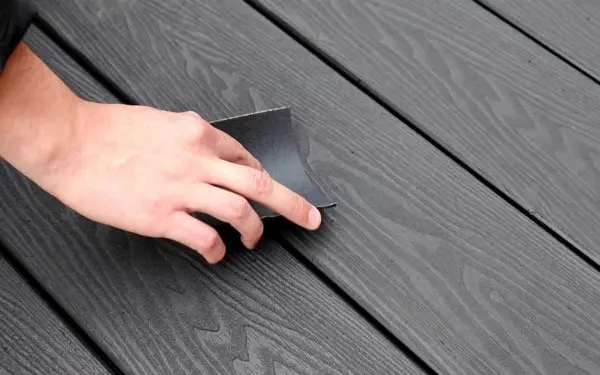How scratch-resistant is composite decking?

Composite decks are more durable than typical wood decks and require less upkeep. This is why this sort of deck is becoming more popular for outdoor use. In an outdoor setting, the deck must be scratch-resistant and resistant to wear and strain. Many homeowners want to know how durable the composite decking material is.
In this post, we’ll go over the scratch resistance of composite decking in detail. And investigate the aspects that influence its performance. Understanding the qualities of composite decking material will allow homeowners to use their decks properly and safely.
Contents
Parts of composite decking
Composite decks are largely composed of wood fibres, recyclable plastics, and adhesives. These materials are precisely engineered. It is feasible to manufacture a scratch- and abrasion-resistant product. Most manufacturers add a protective outer layer for the deck’s plastic component. This protective outer layer efficiently shields the decking against potential harm.
Factors that influence the performance of composite materials
Composite wood decks are known for their exceptional durability. However, there are a few elements that can influence their performance.
Quality of composite materials
The quality of the composite deck has a significant impact on scratch resistance. High-quality decks are often composed of sturdier, more durable materials. This results in exceptional scratch resistance. Lower-quality materials may not offer the same scratch resistance. Surfaces are therefore more prone to deterioration.
Cover Technology
As technology advances, several goods use capping technology. Protective coatings and shells are applied to the deck’s surface throughout the manufacturing process. This improves scratch resistance. The use of composite decking increases protection. Effective at preventing scratches caused by furniture, pets, or daily foot traffic.
Surface roughness and smoothness of composite decks might impact their performance. Certain textures and finishes may be more prone to scratching and abrasion. While other finishes are more effective at masking scratches. Decks with embossed textures hide scratches better than smooth ones. Surface scratches will not be easy to identify.
Proper installation and upkeep
Please ensure proper installation and maintenance. This is necessary to keep composite decking scratch-resistant. Surface damage can be caused by poor installation practices, as well as improper cleaning and maintenance. Please follow the manufacturer’s installation and maintenance instructions during installation. This increases the scratch resistance and durability of the deck.
How to determine the scratch resistance of composite decks?
Tests are required to better evaluate the performance of composite wood decking. The Tabor Abrasion Test and the Janka Hardness Test are two often used tests.
Taber’s abrasion test
Tabor abrasion is a method for determining a material’s capacity to endure wear and tear. Taber wear is measured using a Taber wear test or meter. Taber Wear utilizes two grinding wheels. The material being tested is rotated below it for a set amount of time and load. The test yields a value indicating how well the material resists scratching. Composite decking with a higher grade can be more scratch-resistant.
Janka Hardness Test
The Janka Hardness Test determines a material’s capacity to withstand indentations or dents. While it does not directly determine a material’s scratch resistance. However, it can help determine a material’s overall hardness and durability. Typically, composite materials with higher hardness ratings perform better.
Actual performance
In addition to the two tests listed above, you should examine the composite deck’s performance and durability in normal use. Examples include moving furniture, transporting big goods, and pet activities. Decks covered with composite decking or with a protective coating perform better.
How to improve the scratch resistance of your deck?
Several extra methods can help increase the durability of your deck.
Protective mats
Consider putting protecting mats or cushions under outdoor furniture and heavier items. This helps to distribute weight and reduces the chance of scratches. Protective pads form between composite decks and heavy furniture. It prohibits them from making direct contact.
Regular cleaning
It is critical to keep composite decking clean and clear of dirt and debris. Regular cleaning helps to keep abrasive particles from producing scratches during foot traffic or other activities. We recommend using a leaf blower and brush to remove debris and crumbs from the surface.
Avoid sharp items
Composite decking possesses outstanding qualities. However, you should not use sharp or abrasive things directly on the surface. Metal shovels, knives, and chemical-based cleansers can all cause significant damage to composite materials.
Summarising
Because of its composition and protective characteristics, composite decking is very scratch resistant. High-quality materials, innovative technologies, and precise installation. This can all significantly improve its performance. Understanding the factors that influence scratch resistance and implementing suitable measures. Homeowners can increase its durability.




